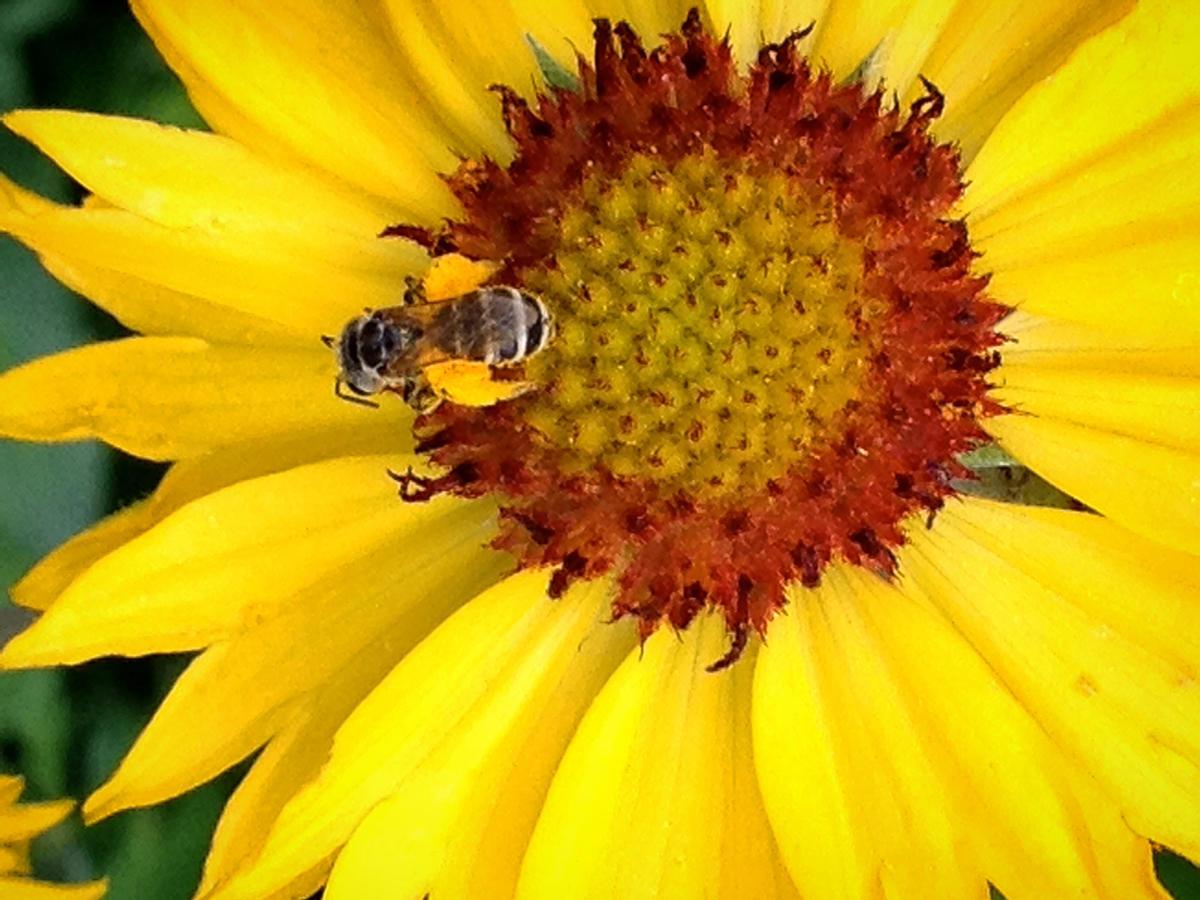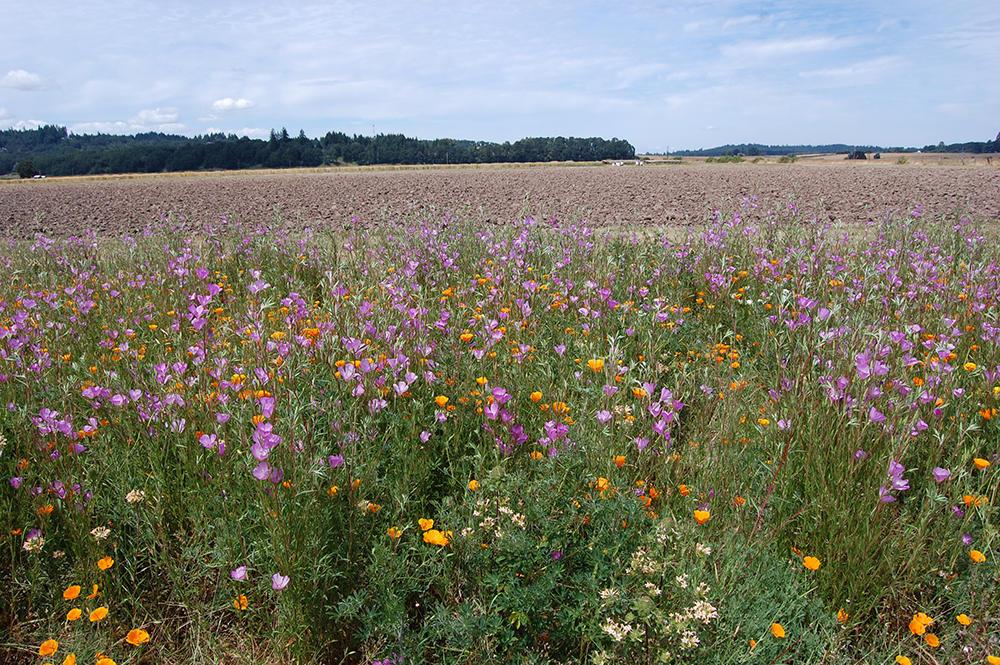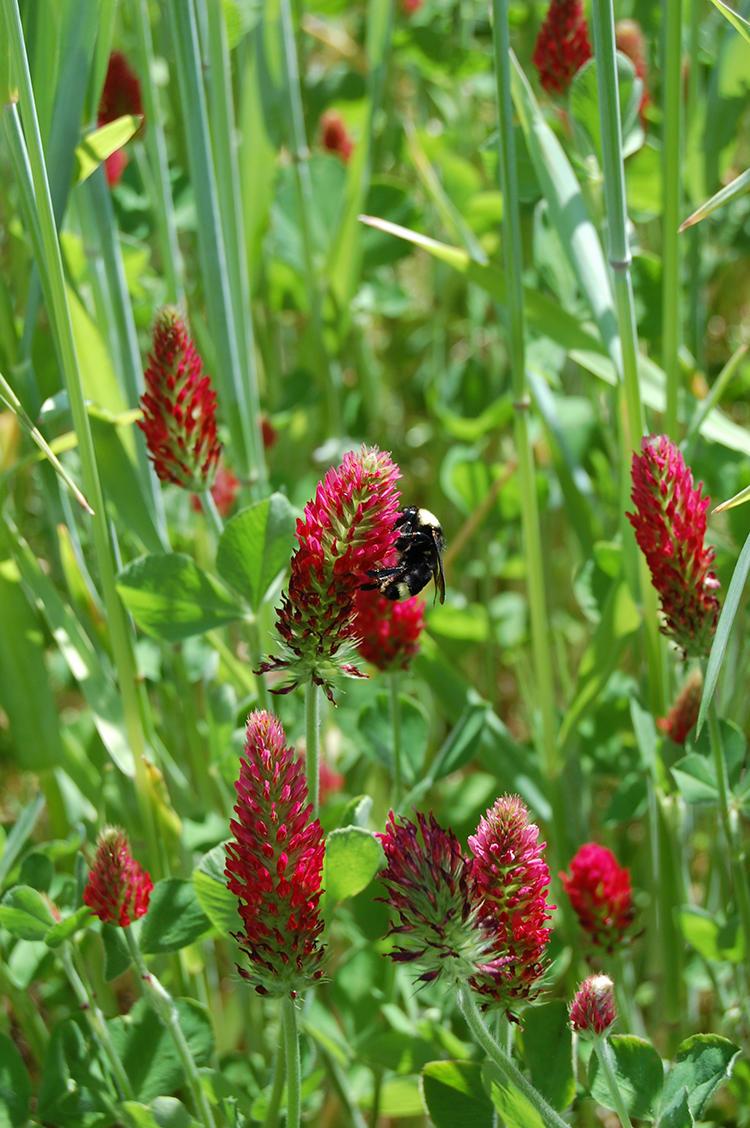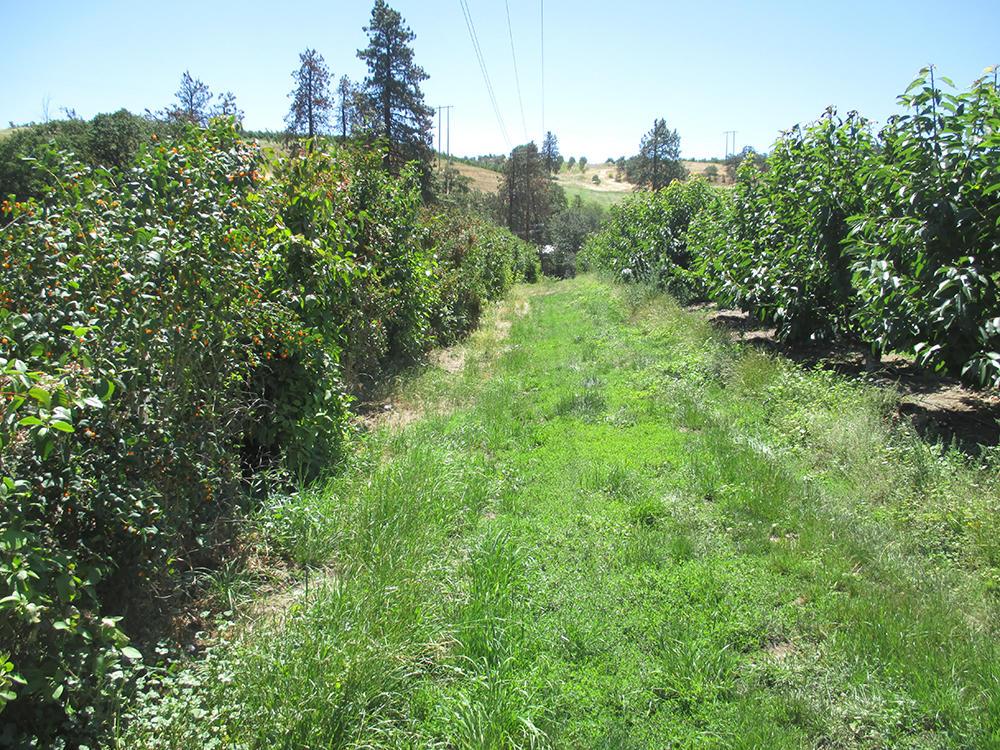This publication is part of the Living on the Land series. It provides concise information on how to attract and support native pollinators by creating and maintaining the right habitat, including features like nesting sites, quality food, and shelter from pesticides.
- Use the button below to download this publication as a PDF.
- Listen to the Living on the Land podcast series.
- Or use the supplemental links below to listen to the audio files for this topic.
Want to learn more? Take our online class!
Unlike annuals that must be replanted every spring, herbaceous perennials are easy to care for and require less of a time commitment. By the end of this 10-week online course, you will be able to grow and maintain your own perennials.
Introduction
Pollinators—including bees, butterflies, hummingbirds, moths, wasps, flies, beetles, and some bats—move pollen between flowers, enabling plants to reproduce from seeds and fruits. Both native and domesticated pollinators are critical members of the food web and play an important economic role in agriculture. Bats and some wasps, flies, and beetles also act as natural pest control agents.
European honey bees are in decline from colony collapse disorder and other stresses. However, native bees can be better pollinators of some crops than European honey bees. Roughly 4,000 species of wild bees live in the United States and can help with pollination demands when honey bees are in short supply. For example, only 250 female mason bees are needed to pollinate an acre of apples, a task that would require 15,000 to 20,000 honey bees. Also, many native bees will forage earlier in the season and in colder, wetter weather than honey bees. Unfortunately, native bees are also in decline, particularly certain species of bumble bees.
Habitat loss, pesticide use, climate change, and the introduction of diseases all contribute to native bee decline. Protecting or providing habitat for native bees is one of the best ways farmers and property owners can support native pollinators.
Provide habitat and undisturbed nesting areas
Wild and honey bees share many of the same habitat requirements, including a foraging area rich in flowers and undisturbed nesting sites. Many wild bees nest in undisturbed soil, where they excavate underground tunnels. Others nest in the hollow stems of plants or abandoned burrows of small rodents. Purposeful plant selection and landscape management can provide bees with pollen, nectar, and potential nesting sites throughout the seasons. Beneficial insects that prey on crop pests, such as predatory beetles, lacewings, and parasitic wasps, also benefit from these habitat features.
Provide high quality food
Native pollinators require pollen and nectar sources throughout the growing season and survive best on native plants. When invasive plants are introduced, they compete with native plants that have co-evolved with native pollinators, resulting in lower-quality forage and nesting locations. Rural and urban residents can support healthy native plant communities by weeding out invasive, non-native plants and replanting natives.
Protect from pesticides and minimize their use
Small doses of pesticides can impair pollinators’ reproduction and feeding. Diverse pollen and nectar sources can increase the chance for bees to detoxify low doses of some pesticides by improving their overall health. To help conserve pollinator populations, use insecticides targeted for a specific pest or reduce pesticide use altogether.
Plantings designed for pollinators that are located near crops, such as hedgerows and field borders, can provide food for pollinators, as well as refuge from pesticides, if they are used.
Create on-farm habitat
Habitat features that benefit pollinators may already be present on farms or can be created. Identify, protect, and enhance existing habitat features, such as native flowering plants, dead wood, undisturbed ground, and overgrown grassy areas. Leave fallow or bare ground to provide soil nesting sites.
Look for ways to incorporate riparian buffers, windbreaks, hedgerows, insectary strips, field borders, range plantings, and flowering cover crops into your farm or landscape. In addition to providing pollinator habitat, these features can capture runoff, stabilize soil, reduce weeds, and provide habitat for wildlife. These features also provide way-stops and corridors for pollinators to move through the landscape.
Habitat patches that are larger and close to other patches are better than smaller or isolated patches. Grouped plantings of an individual species in patches at least 3 feet in diameter are easier for pollinators to find, making collecting pollen and nectar more efficient. The best sites for pollinators are mostly open, with direct sun for at least part of the day.
Prepare and maintain the site properly
Site preparation is an important first step and may require a few years to eliminate weeds before planting or seeding desired species.
During establishment, water deeply at appropriate intervals during dry season and control weeds for the first 2 to 3 years. Once established, native plants require less water and maintenance. Watering intervals will vary by plant species.
Weed control is also critical during establishment. However, consider leaving non-noxious “weeds” that provide food for pollinators when other resources are lacking. For example, native milkweeds are wildflowers that provide nectar and overwintering habitat for adults and larvae of Monarch butterflies.
Select appropriate plants
A diverse mix of blooming plants will attract a greater diversity and abundance of bees. Create a diversity of blooms with at least three flowering plants per season, including spring, summer, and late summer/early fall. Food available early in the spring will lead to more bees in the middle and end of the year. Include native bunch grasses in plantings to provide potential nesting and overwintering sites for pollinators, and to improve resistance to weed encroachment. See plant selection and installation guides below for recommendations for your area.
Resources
- The Pollinator Partnership, Eco-Regional Planting Guides
- Plants for Pollinators in Oregon (USDA-NRCS: technical note)
- Plants for Pollinators in the Inland Northwest (USDA-NRCS: technical note)
- Xerces pollinator habitat installation guides
- SARE cover cropping for pollinators and beneficial insects
- Attracting Native Pollinators, The Xerces Society Guide, Storey Publishing, 2011
Websites
For more information on providing habitat for native pollinators, contact your local Extension agent, Natural Resources Conservation Service, or Soil and Water Conservation District. Technical and financial assistance is available for landowners wishing to address resource concerns on their property.
The phrase “Living on The Land” is used with permission from Living on The Land Stewardship for Small Acreage, © 2008, UNCE/WSARE.



